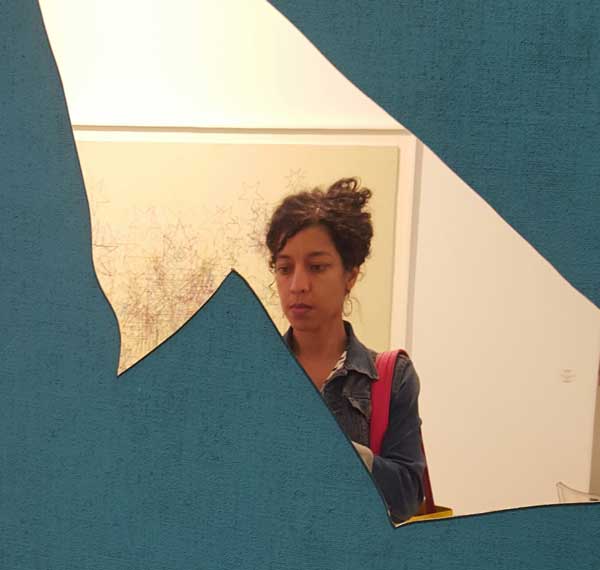The life of an art collector during the ‘new normal’
Interview with Art Collector Liesle Barrath
The arrival of the novel coronavirus has not only affected human life, but businesses as well, in South Africa and globally.
With countries implementing lockdowns to effect social distancing in order to slow the rate of infections, businesses have found themselves affected negatively and some will find it hard to survive as a result of the lockdown and the restrictions. The art business has not been spared either. Depending largely on foot traffic, art businesses such as art galleries, theatres, art fairs, art auction companies, concert organisers and arts festivals have been significantly affected.
However, with its capacity for creativity, the sector is finding innovative new ways of connecting and doing business, irrespective of the onslaught by the coronavirus, with various degrees of success and failure. For art businesses to thrive and for artists to sustain themselves they rely on art patrons and collectors, a relationship that has been disrupted by COVID-19.
Citylife Arts has started a series that focuses on art business leaders and how the art businesses they run are responding to the challenges posed by the coronavirus, especially during the lockdown, by adapting new models of running businesses, for example using new technologies.
In this instalment of the series, CityLife Arts editor EDWARD TSUMELE chats to LIESLE BARRATH, a Johannesburg based art collector.
ET: You are known to regularly move around arts events such as exhibitions, art auctions and art fairs around the world, how has the current situation of the coronavirus affected your lifestyle?
LB: I miss the opportunity to travel for art – exploring the art fairs and art museums. COVID-19 Lockdowns across the world have meant canceling a trip to Lisbon for ARCO Lisboa. However, much more can be explored online and it has been useful to see the very quick transformations that some galleries and art fairs have undertaken to convert from physical platforms to digital.
ET: They say that collecting art, visiting exhibitions, art fairs and auctions in order to view art is in fact addictive, a good addiction if you like, how have you managed to cope with these current restrictions that are obviously in place to curb the fast spread of the rate of infection of the virus?
LB: I’ve participated in online exhibitions (as an audience member of course). Gallerists present work differently and there is more opportunity to see and hear the artists in and from their homes studios. Also, 1:54, Art Basel, Frieze and ARCO have hosted many more webinars than would normally have been offered. Access to conversations between artists, gallerists, critics, museum directors, art market “experts” is easier because of these online platforms.
ET: People who love art in general model their lifestyles around the things they love such as viewing art with friends, what sort of personal adjustment did you have to make in order to still make your life feel normal in the face of social distancing that restrict people’s interaction with each other?
LB: I don’t think this has been affected much. I share links to online talks and webinars published by Art Fair organisers; I pay more attention to art media newsletters and share what I find with friends; and some of those friends then engage in conversation about what has been shared by text or call or video chat. Much of my art viewing is a personal experience in any event. I tend to go to many exhibitions and art fairs on my own so my online explorations of Frieze booths, ARCO gallery presentations and webinars or instagram live conversations with artists, curators, gallerists and collectors is similar.
ET: People say that in fact life will not be the same again even post COVID-19, and therefore a lot of us will have to fashion out a new lifestyle to suit the new ‘normal’. What do you think of this increasingly popular statement as a result of the situation of the coronavirus in our midst?
LB: We created our “normal” every day during this experience and so I believe that we are already living it. It may be human nature to take advantage of opportunities when they arise – assuming those opportunities align with our desires and what we are passionate about. So, as soon as safe and convenient travel is possible again, we will add to our “normal” the act of traveling for fairs and for museum exhibitions across the world. More locally, the moment I was able to book an appointment to visit a gallery, I did exactly that and was able to view work by an artist after much more focused consideration of her process and how the result impacts me as a viewer.
ET: What is your day job?
LB: I am fortunate to work in financial services and to be part of an organisation that has enabled “working from home” since early March. I have been working throughout the COVID 19 experience, with full and constant awareness that nothing is guaranteed. I see the economic impact of the lockdown locally, across the continent and across the world daily. We are, collectively, at a fragile point in time. Art, in many forms, provides an opportunity to revisit the stories in history, the possibilities of the future and the joys and fragilities of the present. Looking at the art in my home has reminded me of so many aspects of life, triggering smiles, questions and nods of acknowledgement to the makers.










